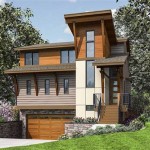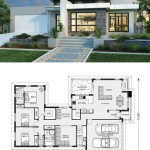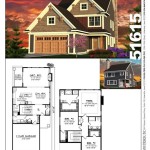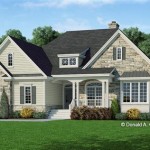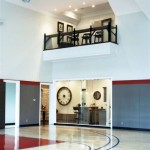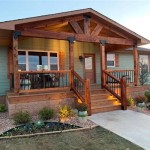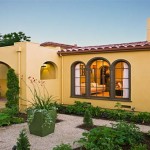Floor Plans For Victorian Style Homes
Victorian architecture, spanning roughly from 1837 to 1901 during the reign of Queen Victoria, is characterized by its elaborate ornamentation, intricate detailing, and a sense of grandeur. Floor plans for Victorian-style homes reflect these aesthetic values, often prioritizing functionality and social interaction while incorporating specific design elements. Understanding the nuances of these floor plans is essential for both historical preservation efforts and for modern adaptations seeking to capture the essence of this architectural period.
Victorian era house designs are far from monolithic. They encompass a range of sub-styles, including Queen Anne, Gothic Revival, Italianate, and Second Empire, each influencing the specific layout and features of the home. However, some common threads run through many Victorian floor plans, shaping the way space was utilized and experienced.
Key Characteristics of Victorian Home Floor Plans
Several defining characteristics mark Victorian floor plans, reflecting the social norms and technological limitations of the era. These include asymmetrical layouts, multiple stories, designated spaces for specific activities, and an emphasis on connectivity between rooms.
Asymmetrical Layouts: Unlike the more symmetrical designs of earlier architectural periods, Victorian homes typically exhibit asymmetrical floor plans. This design choice allows for a dynamic exterior facade, with projecting bays, towers, and varied rooflines. Inside, this asymmetry often translates into rooms of different shapes and sizes, creating unique spaces with individual character. It also allows for the incorporation of multiple entrances and distinct zones within the home.
Multiple Stories: Victorian homes are frequently multi-storied, maximizing living space on a given footprint. The ground floor generally houses the public areas, such as the parlor, dining room, and reception hall. Upper floors are typically reserved for private spaces like bedrooms and bathrooms. The verticality of the design contributes to the overall impression of grandeur and allows for a separation of functions within the household.
Designated Spaces: Victorian floor plans heavily emphasize designated spaces for specific activities. The parlor, a formal reception room used for entertaining guests, is a quintessential feature. Dining rooms are typically separate and often quite large, reflecting the importance of formal meals in Victorian society. Libraries or studies provided spaces for intellectual pursuits, while sewing rooms or nurseries catered to specific domestic needs. This clear demarcation of space reflects the structured social hierarchy of the time.
Connectivity Between Rooms: Although spaces were designated for specific functions, Victorian floor plans often prioritized connectivity between rooms. Wide archways, hallways, and double doors facilitated easy movement and communication within the household. This connectivity allowed for a flow of activity and conversation, fostering a sense of community within the home. The arrangement also allowed for a degree of flexibility, as spaces could be adapted for different purposes as needed.
Common Rooms and Their Arrangement
Understanding the typical arrangement of rooms in a Victorian home provides insight into the daily life and social customs of the era. Certain rooms consistently appear in Victorian floor plans, albeit with variations in size and detailing depending on the specific style and the owner's preferences.
The Parlor: As previously mentioned, the parlor was the formal reception room, often located near the main entrance. It was typically the most elaborately decorated room in the house, showcasing the family's wealth and taste. Furniture was carefully arranged to facilitate conversation and display valued possessions. The parlor was primarily used for entertaining guests and special occasions.
The Dining Room: The dining room was another essential space for formal gatherings. It typically featured a large dining table, chairs, and a sideboard for serving dishes and storing silverware. The dining room was often located near the kitchen to facilitate the serving of meals. The size and grandeur of the dining room reflected the importance of formal dining in Victorian society.
The Kitchen: Victorian kitchens were often located at the rear of the house, separated from the main living areas. This separation was partly due to the noise and odors associated with cooking. Kitchens were typically equipped with a range, a sink, and storage areas for food and utensils. In larger homes, separate sculleries and pantries were also common.
The Bedrooms: Bedrooms were typically located on the upper floors, providing privacy and tranquility. Master bedrooms were often spacious and featured elaborate furnishings, including a large bed, dressers, and wardrobes. Smaller bedrooms were provided for children and servants. The number of bedrooms varied depending on the size of the family and the household staff.
The Bathrooms: Early Victorian homes often had limited bathroom facilities. As indoor plumbing became more common, bathrooms were added, typically located near the bedrooms. Bathrooms typically included a bathtub, a sink, and a toilet. In wealthier homes, separate dressing rooms and water closets might also be included.
The Hallway and Staircase: The hallway and staircase were integral parts of the Victorian floor plan, connecting the various rooms and floors of the house. Hallways were often wide and well-lit, providing a sense of spaciousness and grandeur. Staircases were typically elaborately decorated, featuring intricate woodwork and ornate banisters. The hallway and staircase served as important transitional spaces within the home.
Adapting Victorian Floor Plans for Modern Living
While the charm and historical significance of Victorian homes are undeniable, adapting their floor plans for modern living can present challenges. The original layouts often prioritize formality and separation of spaces, which may not align with contemporary lifestyles that favor open-plan living and informal gatherings.
Open-Concept Modifications: One common adaptation is to open up the kitchen to the dining room or living room, creating a more integrated living space. This can involve removing walls or creating larger archways to improve flow and facilitate social interaction. However, care must be taken to preserve the original architectural details and character of the home.
Bathroom and Kitchen Upgrades: Modernizing bathrooms and kitchens is often necessary to meet contemporary standards of comfort and convenience. This can involve installing new fixtures, updating appliances, and improving ventilation. When making these upgrades, it's important to choose materials and designs that are sympathetic to the Victorian aesthetic.
Accessibility Considerations: Victorian homes often present accessibility challenges due to their multiple stories and narrow hallways. Adding ramps, elevators, or widening doorways may be necessary to accommodate individuals with mobility limitations. These modifications should be carefully planned to minimize their impact on the original design.
Electrical and Plumbing Upgrades: Victorian homes often require significant electrical and plumbing upgrades to meet modern safety standards and accommodate increased energy demands. This can involve rewiring the entire house, replacing old pipes, and installing energy-efficient lighting and appliances. These upgrades are essential for ensuring the safety and functionality of the home.
Adding Modern Amenities: Integrating modern amenities, such as home theaters, home offices, or fitness rooms, can enhance the livability of a Victorian home. These spaces can be incorporated into existing rooms or added as extensions, depending on the available space and the homeowner's needs. It's important to carefully consider the placement and design of these amenities to ensure they complement the overall aesthetic of the home.
Successfully adapting a Victorian floor plan for modern living requires a careful balance between preserving the historical character of the home and meeting the needs of contemporary lifestyles. Consulting with architects and designers who specialize in historic preservation can help to ensure that these adaptations are done in a sensitive and respectful manner.
In conclusion, Victorian floor plans are a testament to the architectural ingenuity and social customs of a bygone era. Their distinctive features, including asymmetrical layouts, designated spaces, and intricate detailing, offer a glimpse into the lives of those who inhabited these homes. While adapting these floor plans for modern living can present challenges, it's possible to create spaces that are both historically significant and functionally relevant. By understanding the nuances of Victorian floor plans, homeowners can preserve the legacy of these architectural treasures while enjoying the comforts of contemporary living.

Victorian Style House Plan 5 Beds Baths 4898 Sq Ft 320 414 Plans Homes

Victorian Style House Plan 4 Beds 2 5 Baths 2174 Sq Ft 72 137 Plans Country

Victorian Floor Plan Upper 132 255 House Plans Mansion

1905 Glen Flora Queen Anne Style Plan By Hodgson Victorian House Plans Vintage Floor

Country Floor Plan 5 Bedrms Baths 4898 Sq Ft 146 2663

Victorian House Plans

Victorian Style House Plan 3 Beds 2 5 Baths 2350 Sq Ft 929 306 Houseplans Com
Luxury Victorian European House Plans Home Design Pdi 570 9385

Vintage House Plan Homes And 28 Victorian Plans From Palliser S Model Mansion Floor
Victorian Style House Plan 4 Beds 3 5 Baths 2772 Sq Ft 410 104 Floorplans Com

